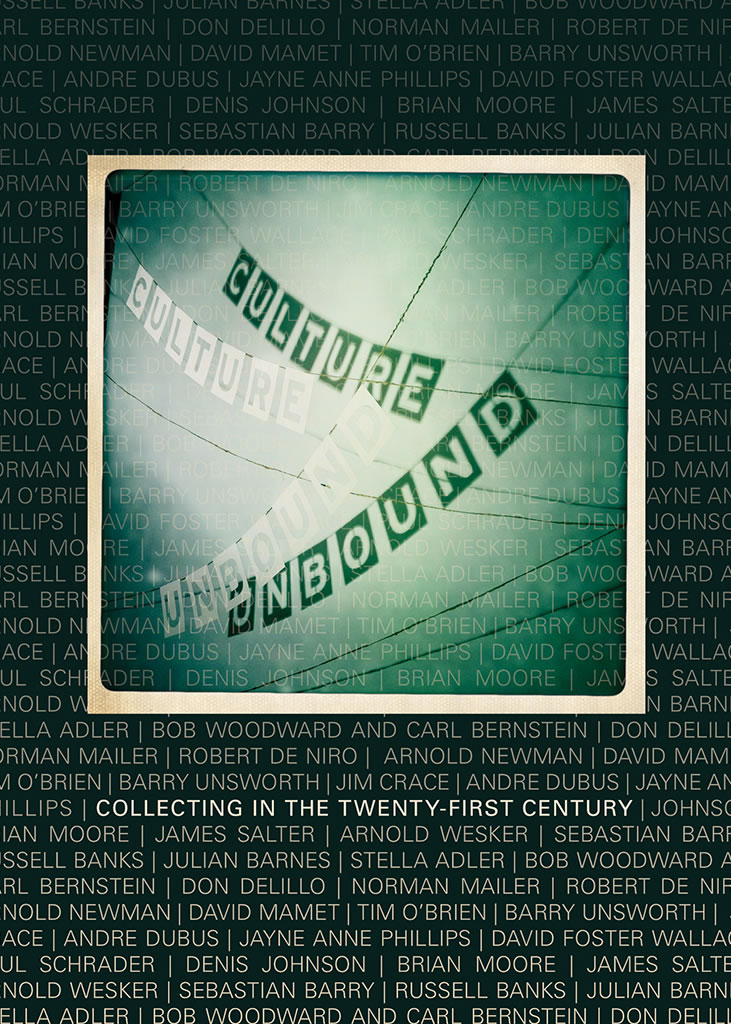Culture Unbound
Collecting in the Twenty-First Century
February 1, 2011 – July 31, 2011
The Harry Ransom Center's exhibition "Culture Unbound: Collecting in the Twenty-first Century" showcases major literary and cultural archives acquired by the Center since 2000.
The Ransom Center, a humanities research library and museum at The University of Texas at Austin, is widely regarded as having one of the finest collections of contemporary literature and culture and is particularly known for collecting archives. The Center has added the personal archives of more than 55 writers and artists to its collections in the past decade. Highlights from many of these archives will be displayed at the Ransom Center from Feb. 1 to July 31, 2011.
"This exhibition celebrates the Ransom Center's hunt for archives of writers and artists who have made a mark on our culture, archives that invigorate scholarly research and deepen our understanding of literature and art," said Ransom Center Director Thomas F. Staley. "Since the beginning of this new century, the Ransom Center has been in a rich period of collecting, adding the archives of such important figures as writer and cultural iconoclast Norman Mailer, journalists Bob Woodward and Carl Bernstein, filmmaker Robert De Niro and photographer Arnold Newman, among dozens of others."
Featuring more than 200 items, the exhibition showcases materials from major and lesser-known figures, from writers David Foster Wallace, David Mamet, Tim O'Brien and Don DeLillo to Brian Moore, Julian Barnes, Barry Unsworth and Jayne Anne Phillips, from filmmaker Paul Schrader to acting teacher Stella Adler.
Manuscripts, notes, journals, outlines and correspondence from many of the archives will offer a glimpse into the creative process and the evolution of a work.
The exhibition will feature a series of chains of correspondence between the writers and artists whose archives were acquired, showing the numerous connections between these individuals and demonstrating how the Center builds a collection of interrelated archives that strengthen and give context to one another.
Visitors will also have the opportunity to read published examples of works featured in the exhibition in a designated reading area.


